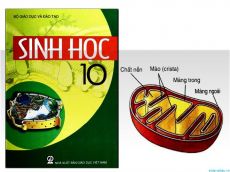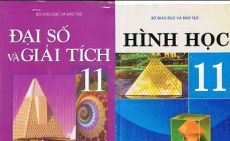Mark the letter A, B, C, or D to indicate the sentence that is closest in meaning to each of the following questions
People say that Vietnamese students are not well-prepared for their future jobs.
Suy nghĩ và trả lời câu hỏi trước khi xem đáp án
Lời giải:
Báo saiKiến thức về câu bị động
Đề bài: Người ta nói rằng học sinh Việt Nam không được chuẩn bị tốt cho công việc tương lai của họ = A. Học sinh Việt Nam được nói là không được chuẩn bị tốt cho công việc tương lai của họ.
Câu hỏi liên quan
-
Large animals that inhabit the desert have evolved a number of adaptations for reducing the effects of extreme heat. One adaptation is to be light in color, and to reflect rather than absorb the Sun's rays. Desert mammals also depart from the normal mammalian practice of maintaining a constant body temperature. Instead of trying to keep down the body temperature deep inside the body, which would involve the expenditure of water and energy, desert mammals allow their temperatures to rise to what would normally be fever height, and temperatures as high as 46 degrees Celsius have been measured in Grant's gazelles. The overheated body then cools down during the cold desert night, and indeed the temperature may fall unusually low by dawn, as low as 34 degrees Celsius in the camel. This is an advantage since the heat of the first few hours of daylight is absorbed in warming up the body, and an excessive buildup of heat does not begin until well into the day.
Another strategy of large desert animals is to tolerate the loss of body water to a point that would be fatal for non-adapted animals. The camel can lose up to 30 percent of its body weight as water without harm to itself, whereas human beings die after losing only 12 to 13 percent of their body weight. An equally important adaptation is the ability to replenish this water loss at one drink. Desert animals can drink prodigious volumes in a short time, and camels have been known to imbibe over 100 liters in a few minutes. A very dehydrated person, on the other hand, cannot drink enough water to rehydrate at one session, because the human stomach is not sufficiently big and because a too rapid dilution of the body fluids causes death from water intoxication. The tolerance of water loss is of obvious advantage in the desert, as animals do not have to remain near a water hole but can obtain food from grazing sparse and far-flung pastures. Desert-adapted mammals have the further ability to feed normally when extremely dehydrated, it is a common experience in people that appetite is lost even under conditions of moderate thirst.
Why does the author mention humans in the second paragraph?
-
Read the passage carefully and choose the correct answer.
The 22nd SEA Games, hosted this year by Vietnam, has joined the international movement to rid sports of tobacco. For the first time, the regional sporting event will be tobacco-free under a landmark cooperative agreement signed in April 2003 between the World Health Organization (WHO), the 22nd SEA Games Organizing Committee and the Vietnamese Ministry of Health. Hanoi Health Department has organized a press seminar to celebrate and raise awareness about the tobacco-free SEA Games.
The 22nd SEA Games is the first games hosted by Vietnam and 10 countries from the Southeast Asian region with nearly 8,000 athletes and coaches will participate. It will be the first tobacco-free international sporting event in Vietnam, joining other international tobacco-free sporting events such as the FIFA World Cup 2002, and the Winter Olympic Games 2002.
The 22nd SEA Games will ban all sales, advertising and other promotion of tobacco products, and restricts smoking in all Games venues. The aim is to protect spectators, athletes, event staff, media and other visitors from the serious health hazards of second-hand tobacco smoke, as well as to change public attitudes about the social acceptability of smoking. Madame Pascale Brudon, WHO Representative in Vietnam, stated, "Vietnam has established 3 years ago a comprehensive, ambitious national tobacco control policy and a national tobacco control program. The tobacco-free 22nd SEA Games will be yet another area where Vietnam is leading the way for other countries in the region and the world in protecting its citizens from the debilitating and disastrous consequences of tobacco use."
WHO has provided funding and technical assistance to the SEA Games Organizing Committee and Vietnamese Ministry of Health to train of over 4,000 SEA Games organizers and volunteers on the implementation of the tobacco-free policy. An international team of trainers from the Ministry of Health, International Organization for Good Temper (lOGT), WHO and International Development Enterprises (IDE) began a series of national training workshops for volunteers in April, 2003. The tobacco-free SEA Games are an inspiration and a model for other sport events, big and small, not only in Vietnam but also in the Southeast Asian and Western Pacific Region.
Which sentence is not true when talk about SEA Games?
-
Read the following passage and choose the best answer for each blank.
Yesterday, Eleanor Preston won an international swimming competition for girls (26) _________ under sixteen. She swam faster (27) _________ girls from ten other countries. This (28) ______even better when you learn that Elenor is only thirteen. She had to have special (29) _________to enter, because normally competitors are fourteen or older. Eleanor has been (30) ______on swimming for a long time – (31) ______she was three in fact. I wonder whether she found it hard to (32) _______several hours a day training. She (33) _________. me that sometimes she has problems finding time for homework, but that’s all. “My parents have given up so (34) _______time driving me to local competitions, I think it’s been harder for them, actually.” Her aim is to swim at the Olympic Games. After yesterday’s performance, I think she may (35)_________. there.
(31) _________
-
Read the following passage and mark the letter A, B, C, or D on your answer sheet to indicate the correct answer to each of the questions.
To quote CREST founder Dr. Martha Honey, we earnestly believe that ecotourism is “simply a better way to travel.” Here’s a look at how this transformational approach to travel benefits conservation, increases cross-cultural understanding, and ultimately turns travelers into environmental advocates:
To see how ecotourism benefits nature and wildlife, let’s look at endangered species such as African Elephants. Ivory from Elephant tusks is worth $1500 a pound on the black market, which has led to a dramatic increase in poaching. But Elephants are worth 76 times more alive than dead. When you consider the revenue from wildlife photography tours, luxury safari camps, and other ecotourism offerings, a single Elephant is worth $1.3 million over the course of its lifetime! Ecotourism offers a long-term alternative to exploitation, generating sustainable revenue and ensuring better overall health of the ecosystem.
Nature reserves and national parks help prevent deforestation and pollution, while also protecting the habitat of endemic species. The revenue that ecotourism provides can help replace profits from exploitative practices such as mining or slash ‘n’ burn agriculture. It can also help ensure the long-term financial viability of the area. Naturalist guides also help travelers understand the value of a pristine ecosystem, and teach them about the importance of conservation. This ultimately help to create a more mindful and conscious legion of travelers.
When managed properly, ecotourism can offer locals alternative revenue streams. In wildlife-rich countries such as Rwanda, former poachers are often employed as guides or trackers, capitalizing on their knowledge of the animals and their habitat. In Costa Rica, unemployment has fallen to less than 10% since the country started building its ecotourism infrastructure in the 1970s. Involving local communities in tourism management empowers them by ensuring that more revenue is reinvested locally. Ecotourism also offers indigenous peoples an opportunity to remain on ancestral land, conserve it, and preserve traditional culture.
Sure, being a responsible traveler takes a greater level of commitment to being conscious and mindful of the impact we have on the destinations we visit. But ecotourism also offers us incredible, transformative experiences, allowing us to develop closer personal relationships to the nature, wildlife, and local people we encounter during our adventures. Learning about ecotourism can permanently change your understanding of mankind’s role in our planetary ecosystem. And once you’ve had that sort of travel experience, you’ll never want to travel the traditional way again.According to paragraph 5, why did the author claim that people will prefer ecotourism over normal one?
-
Choose the word or phrase among A, B, C or D that best fits the blank space in the following passage:
"The 22nd SEA Games were launched by an impressive opening ceremony at Hanoi’s My Dinh National Stadium, in front of over 40,000 awed spectators. Divided into two parts, rites and festivals, the ceremony (1)…. At 19:00 with the song, “Vietnam - Our Fatherland”. The (2)….. appearance of parachutists, carrying the 11 national flags of the competing Southeast Asian countries, was greeted (3) …. thunderous applause from the audience.
All the stadium’s lights suddenly came on, (4)…. the start of the procession of Vietnam’s flag and the 22nd SEA Games' Symbol. The 11 sporting delegations then marched past the reviewing stand to excite applause from officials and spectators.
The sacred torch, which symbolises the (5)….. of the Games and (6)… to compete with burning intensity, was taken from the Ho Chi Minh Museum and passed by Truong Quoc Thang (cyclist), Bui Thi Nhung (runner), Vu Kim Anh (karate artist) and athletes from 10 regional countries to Nguyên Thuy Hien (wushu artist) (7)….. gave it to the Prime Minister, who in tum passed it to an athlete dressed like national hero Giong.
From this athlete’s hand, the official flame was lit at My Dinh National Stadium and will bum (8) …… the course of the Games. (9)…… at the opening ceremony, Minister-Chairman of the Physical Training and Sports Committee Nguyen Danh Thai, who is also the head of the 22nd SEA Games Organising Board, warmly welcomed Party and State leaders, delegates, domestic and international guests, and 11 sports delegations from Southeast Asian countries to the 22nd SEA Games.
(10)……. behalf of the host country, Prime Minister Phan Van Khai declared the 22nd SEA Games open."4. All the stadium’s lights suddenly came on, (4)…. the start of the procession of Vietnam’s flag and the 22nd SEA Games' Symbol.
-
Read the following passage and mark the letter A, B, C, or D on your answer sheet to indicate the correct answer to each of the questions.
To quote CREST founder Dr. Martha Honey, we earnestly believe that ecotourism is “simply a better way to travel.” Here’s a look at how this transformational approach to travel benefits conservation, increases cross-cultural understanding, and ultimately turns travelers into environmental advocates:
To see how ecotourism benefits nature and wildlife, let’s look at endangered species such as African Elephants. Ivory from Elephant tusks is worth $1500 a pound on the black market, which has led to a dramatic increase in poaching. But Elephants are worth 76 times more alive than dead. When you consider the revenue from wildlife photography tours, luxury safari camps, and other ecotourism offerings, a single Elephant is worth $1.3 million over the course of its lifetime! Ecotourism offers a long-term alternative to exploitation, generating sustainable revenue and ensuring better overall health of the ecosystem.
Nature reserves and national parks help prevent deforestation and pollution, while also protecting the habitat of endemic species. The revenue that ecotourism provides can help replace profits from exploitative practices such as mining or slash ‘n’ burn agriculture. It can also help ensure the long-term financial viability of the area. Naturalist guides also help travelers understand the value of a pristine ecosystem, and teach them about the importance of conservation. This ultimately help to create a more mindful and conscious legion of travelers.
When managed properly, ecotourism can offer locals alternative revenue streams. In wildlife-rich countries such as Rwanda, former poachers are often employed as guides or trackers, capitalizing on their knowledge of the animals and their habitat. In Costa Rica, unemployment has fallen to less than 10% since the country started building its ecotourism infrastructure in the 1970s. Involving local communities in tourism management empowers them by ensuring that more revenue is reinvested locally. Ecotourism also offers indigenous peoples an opportunity to remain on ancestral land, conserve it, and preserve traditional culture.
Sure, being a responsible traveler takes a greater level of commitment to being conscious and mindful of the impact we have on the destinations we visit. But ecotourism also offers us incredible, transformative experiences, allowing us to develop closer personal relationships to the nature, wildlife, and local people we encounter during our adventures. Learning about ecotourism can permanently change your understanding of mankind’s role in our planetary ecosystem. And once you’ve had that sort of travel experience, you’ll never want to travel the traditional way again.The word “pristine” in paragraph 3 most likely means _______.
-
Read the passage and choose the best answer:
History of SEA Games
The Southeast Asian Games owes its origins to the Southeast Asian Peninsular Games or SEAP Games. On 22 May, 1958, delegates from the countries in Southeast Asian Peninsula attending the 3rd Asian Games in Tokyo, Japan had a meeting and agreed to establish a sport organization. The SEAP Games was conceptualized by Laung Sukhumnaipradit, then Vice-President of the Thailand Olympic Committee. The proposed rationale was that a regional sports event will help promote cooperation, understanding and relations among countries in the Southeast Asian Peninsula region. Thailand, Burma (now Myanmar), Malaya (now Malaysia), Laos, South Vietnam (now Vietnam) and Cambodia were the founding members. These countries agreed to hold the Games biannually. The SEAP Games Federation Committee was formed.
The first SEAP Games were held in Bangkok from 12-17 December, 1959 comprising more than 527 athletes and officials from Thailand, Burma, Malaysia, Cambodia, South Vietnam and Laos participating in 12 sports. At the 8th SEAP Games in 1975, the SEAP Federation considered the inclusion of Indonesia and the Philippines. The two countries were formally admitted in 1977, the same year when SEAP Federation changed their name to Southeast Asian Games Federation (SEAGF), and the games were known as the Southeast Asian Games. Brunei was admitted at the 9th SEA Games in Kualalumper, Malaysia, and East Timor at the 22nd SEA Games in Hanoi, Vietnam. The 23rd SEA Games held in the Philippines, which started from 27 November and ended on 5 December 2005, hosting the biennial event for the third time.
The 24th SEA Games was held in 2007.
-
Read the following passage and mark the letter A, B, C, or D on your answer sheet to indicate the correct answer to each of the questions.
No matter how much you’ve trained, performance anxiety before or during a competition may occur, hindering the results of your match.
While you can tell yourself to stay calm prior to a competition, managing performance anxiety may not be as simple as. Research has shown that strategies such as meditation and guided imagery are great places to start; both require your brain to rehearse what you will do during your competition. Your imagination holds much more power than you may expect, helping you focus on how to beat your opponent, instead of other factors that contribute to your anxiety. Adequate preparation also plays a large role.
To master the mental game, it takes time. Starting one month before your competition, consider sitting in solitude in a comfortable position for 15 minutes each day. Focus first on breathing in and out deeply. Then, begin to imagine competition situations and visualize yourself in a fight with your competitor. Be mindful of your anxiety and return your focus to breathing if you feel yourself tense up. Sometimes, you may find yourself thinking self-deprecating or negative thoughts, at which point you should consciously replace any negative self-talk with positive self-talk. During these visualizations, also be sure to think about your posture and form and create cues — mental and verbal — that will help you review and correct your technique.
Pre-competition jitters are completely normal and it’s important to acknowledge that. Accepting that this excitement and/or nervousness is normal will help your body also understand that what you are experiencing is not fear, but perhaps part of your adrenaline response to competition. With more experience, mindful visualization and mental/physical preparation can help you manage and overcome performance anxiety.According to paragraph 3, what step is NOT included in the mindful visualization technique?
-
American music, in most of its various forms, can be traced back to the music of the earliest African- Americans. Even though these Americans came here under the worst of circumstances, they still brought with them traditions, and developed new traditions of their own, that have grown into what is recognized around the world today as American music.
Musicians, like other artists, are usually quick to give credit where credit is due. Just as a writer quotes his sources, a musician credits those musicians who inspired him. In the case of the early African-Americans, that is not always easy. Many of the slaves who brought musical traditions from Africa will never be known by name. No one wrote their history. Many of the slaves who sang work songs in the fields will never be known by name. No one wrote their history either.
However, there is a lot that we do know.
The first well-recognized form of African-American music was spirituals. Spirituals are religious songs. They are songs that tell a story or express emotions. Spirituals have a strong rhythm. They are often sung by a group, sometimes with a leader who sings a line or two alone and a chorus that sings the refrain. Spirituals originated in the Southern United States. Spirituals sung by slaves often expressed the hope for freedom that was so important in their lives. Well know spirituals include "Go Down Moses," "Deep River," and "Swing Low SweetChariot." After slavery ended, spirituals began to spread to other parts of the United States. Harry Thacker Burleigh was one of the first singers to perform spirituals on stage in a concert. Marian Anderson, well known for her classical singing, helped spirituals to gain a wider audience too. Spirituals influenced the development of another well-known form of American music - the blues. The blues were a more individual style of music than spirituals. Blues were often sung solo, and sometimes they were accompanied by guitar music. As the name suggests, the blues were often about sadness and facing troubles. However, the blues could also be funny, positive, and even defiant. One blues singer, loved for her strong, beautiful voice, was Bessie Smith. Another early blues musician was W. C. Handy. Handy was not only a musician, he also wrote music, promoted concerts, and published bluessongs.
During the time that the blues were spreading across the country, another style of music was also quickly gaining in popularity. Ragtime was energetic music with a complicated, syncopated beat. Often played on the piano, ragtime was the latest and most sophisticated in American popular music. The best-known ragtime musician was probably Scott Joplin, who wrote many hit ragtime pieces for the piano including "Maple Leaf Rag."
Eventually, elements from all of these forms of music and more came back together. In their own kind of melting pot, African rhythms, slave work songs, spirituals, blues, ragtime, and other influences recombined to form the beginnings of that truly American art form - jazz. In the late 1800’s jazz was just beginning, but not long after the turn of the century, it would be the most popular American music. It would go on from there to worldwide popularity. Jazz would branch out into many forms, and it would influence future styles of Americanmusic.
Many musicians today credit earlier musicians such as Scott Joplin or Bessie Smith with inspiring their music. It’s a shame that they can’t also name the earliest African-Americans who really began the traditions that led to the American music of today.
What is NOT true when talking about blues?
-
Read the following passage and mark the letter A, B, C, or D on your answer sheet to indicate the correct answer to each of the questions.
Coral reefs are some of the most diverse ecosystems in the world, housing tens of thousands of marine species. With their hardened surfaces, corals are sometimes mistaken as being rocks. And, because they are attached, “taking root” to the seafloor, they are often mistaken for plants. However, unlike rocks, corals are alive. And unlike plants, corals do not make their own food. Corals are in fact animals. Appearing as solitary forms in the fossil record more than 400 million years ago, corals are extremely ancient animals that evolved into modern reef-building forms over the last 25 million years.
Coral reefs are the largest structures on earth of biological origin. Coral reefs are unique and complex systems. Rivaling old growth forests in longevity of their ecological communities, well-developed reefs reflect thousands of years of history.
Corals are ancient animals related to jellyfish and anemones. The branch or mound that we often call “a coral” is actually made up of thousands of tiny animals called polyps. A coral polyp is an invertebrate that can be no bigger than a pinhead to up to 30 centimeters (1 foot) in diameter. The polyps extend their tentacles at night to sting and ingest tiny organisms called plankton and other small creatures. Each polyp has a saclike body and a mouth that is encircled by stinging tentacles. The polyp uses calcium carbonate (limestone) from seawater to build a hard, cup-shaped skeleton. This skeleton protects the soft, delicate body of the polyp.
Reefs only occur in shallow areas that are reachable by sunlight because of the relationship between coral and algae. Various types of microscopic algae, known as Symbiodinium, live inside of the coral, providing them with food and helping them to grow faster.
There are over 2,500 kinds (species) of corals. About 1,000 are the hard corals that build coral reefs. Other corals are soft corals. Soft corals have skeletons that are flexible and can bend with the water. The three main types of coral reefs are fringing reefs, barrier reefs, and coral atolls. The most common type of reef is the fringing reef. This type of reef grows seaward directly from the shore. They form borders along the shoreline and surrounding islands. When a fringing reef continues to grow upward from a volcanic island that has sunk entirely below sea level, an atoll is formed. Atolls are usually circular or oval in shape, with an open lagoon in the center. Any reef that is called a barrier reef gets its name because its presence protects the shallow waters along the shore from the open sea. That protection promotes the survival of many types of sea plant and animal life.Which of the following could best reflect the main purpose of the author in the passage?
-
American music, in most of its various forms, can be traced back to the music of the earliest African- Americans. Even though these Americans came here under the worst of circumstances, they still brought with them traditions, and developed new traditions of their own, that have grown into what is recognized around the world today as American music.
Musicians, like other artists, are usually quick to give credit where credit is due. Just as a writer quotes his sources, a musician credits those musicians who inspired him. In the case of the early African-Americans, that is not always easy. Many of the slaves who brought musical traditions from Africa will never be known by name. No one wrote their history. Many of the slaves who sang work songs in the fields will never be known by name. No one wrote their history either.
However, there is a lot that we do know.
The first well-recognized form of African-American music was spirituals. Spirituals are religious songs. They are songs that tell a story or express emotions. Spirituals have a strong rhythm. They are often sung by a group, sometimes with a leader who sings a line or two alone and a chorus that sings the refrain. Spirituals originated in the Southern United States. Spirituals sung by slaves often expressed the hope for freedom that was so important in their lives. Well know spirituals include "Go Down Moses," "Deep River," and "Swing Low SweetChariot." After slavery ended, spirituals began to spread to other parts of the United States. Harry Thacker Burleigh was one of the first singers to perform spirituals on stage in a concert. Marian Anderson, well known for her classical singing, helped spirituals to gain a wider audience too. Spirituals influenced the development of another well-known form of American music - the blues. The blues were a more individual style of music than spirituals. Blues were often sung solo, and sometimes they were accompanied by guitar music. As the name suggests, the blues were often about sadness and facing troubles. However, the blues could also be funny, positive, and even defiant. One blues singer, loved for her strong, beautiful voice, was Bessie Smith. Another early blues musician was W. C. Handy. Handy was not only a musician, he also wrote music, promoted concerts, and published bluessongs.
During the time that the blues were spreading across the country, another style of music was also quickly gaining in popularity. Ragtime was energetic music with a complicated, syncopated beat. Often played on the piano, ragtime was the latest and most sophisticated in American popular music. The best-known ragtime musician was probably Scott Joplin, who wrote many hit ragtime pieces for the piano including "Maple Leaf Rag."
Eventually, elements from all of these forms of music and more came back together. In their own kind of melting pot, African rhythms, slave work songs, spirituals, blues, ragtime, and other influences recombined to form the beginnings of that truly American art form - jazz. In the late 1800’s jazz was just beginning, but not long after the turn of the century, it would be the most popular American music. It would go on from there to worldwide popularity. Jazz would branch out into many forms, and it would influence future styles of Americanmusic.
Many musicians today credit earlier musicians such as Scott Joplin or Bessie Smith with inspiring their music. It’s a shame that they can’t also name the earliest African-Americans who really began the traditions that led to the American music of today.
When did jazz become the most popular American music?
-
Choose the letter A, B, C or D to answer these following questions:
Games and sports are an important and essential part of a person's life. Along with the study, games, and sports are also important. Hence, most schools conducts various games competitions and sports. Along with the mental development of every person, physical development is also which needs to be taken into consideration. Sports is an important part of a student’s life as well. So, what is the importance of sports and games?
Sports gives us a good exercise which makes us physically strong and increases our stamina and strength. Regular sports activities make us active and lead to good health. Playing Games makes us aware of our environment i.e. Makes us mentally awake and increases our concentration power. Various Games needs good strategies for better performance and teamwork, so it increases our thinking ability and teaches us the power of teamwork and to find a way out of difficult situations. Games and sports also need a lot of energy. It makes us energetic. Games and Sports needs a lot of cooperation between the players. Hence it increases cooperation with each other.
And at last, all of the games have their own rules and regulations which if not followed, leads to negative points. Hence, we can say that it teaches us the importance of following rules in life.What is the passage mainly about?
-
Read the following passage and mark the letter A, B, C, or D on your answer sheet to indicate the correct answer to each of the questions.
To quote CREST founder Dr. Martha Honey, we earnestly believe that ecotourism is “simply a better way to travel.” Here’s a look at how this transformational approach to travel benefits conservation, increases cross-cultural understanding, and ultimately turns travelers into environmental advocates:
To see how ecotourism benefits nature and wildlife, let’s look at endangered species such as African Elephants. Ivory from Elephant tusks is worth $1500 a pound on the black market, which has led to a dramatic increase in poaching. But Elephants are worth 76 times more alive than dead. When you consider the revenue from wildlife photography tours, luxury safari camps, and other ecotourism offerings, a single Elephant is worth $1.3 million over the course of its lifetime! Ecotourism offers a long-term alternative to exploitation, generating sustainable revenue and ensuring better overall health of the ecosystem.
Nature reserves and national parks help prevent deforestation and pollution, while also protecting the habitat of endemic species. The revenue that ecotourism provides can help replace profits from exploitative practices such as mining or slash ‘n’ burn agriculture. It can also help ensure the long-term financial viability of the area. Naturalist guides also help travelers understand the value of a pristine ecosystem, and teach them about the importance of conservation. This ultimately help to create a more mindful and conscious legion of travelers.
When managed properly, ecotourism can offer locals alternative revenue streams. In wildlife-rich countries such as Rwanda, former poachers are often employed as guides or trackers, capitalizing on their knowledge of the animals and their habitat. In Costa Rica, unemployment has fallen to less than 10% since the country started building its ecotourism infrastructure in the 1970s. Involving local communities in tourism management empowers them by ensuring that more revenue is reinvested locally. Ecotourism also offers indigenous peoples an opportunity to remain on ancestral land, conserve it, and preserve traditional culture.
Sure, being a responsible traveler takes a greater level of commitment to being conscious and mindful of the impact we have on the destinations we visit. But ecotourism also offers us incredible, transformative experiences, allowing us to develop closer personal relationships to the nature, wildlife, and local people we encounter during our adventures. Learning about ecotourism can permanently change your understanding of mankind’s role in our planetary ecosystem. And once you’ve had that sort of travel experience, you’ll never want to travel the traditional way again.What can be inferred from the passage?
-
Read the text below and decide which answer (A,B,C, or D) best fits each space.
BICYCLES
Why don’t the British cycles? Only a quarter of the estimated twenty million bicycles in the country are thought to be in (58) …….. use. In Denmark, which is flatter but no darker or rainier than Britain, twenty percent of all journeys are made by bicycles, while in Britain the (59) …….. is only 5%. The government are trying to (60) …….. this. It is hoped that a grant of millions of pounds from the National Lottery will (61)…….. more people to use their bikes. The money will be used to (62) …….. for a 6,500 mile national network of cycle tracks. Britain needs to (63) …….. environmentally friendly scheme such as this. The southern third of the country is one of the most (64)…….. areas of the world. Environmentalists make it (65) …….. to build new roads, and (66) …….. roads are overcrowded. One official committee described the growth of motor transport as “possibly the (67) ……. environmental threat to the UK”. The (68)…….. of building the cycles tracks is to motivate people to use their bicycles instead of their cars. However, the new tracks are being built (69) …….. cities and not through them. This (70) …….. that only long distance journeys may be easier and safer. Those cyclists who want to (71) …….. inside cities will still be in danger of (72) …….. their lives on busy roads every time they use their bicycles.63...................
-
Read the following passage and mark the letter A, B, C, or D on your answer sheet to indicate the correct answer to each of the questions.
In our connected globalized world, the languages which dominate communications and business, Mandarin, Hindi, English, Spanish and Russian amongst others, are placing small languages spoken in remote places under increasing pressure. Fewer and fewer people speak languages such as Liki, Taushiro and Dumi as their children shift away from the language of their ancestors towards languages which promise education, success and the chance of a better life. While to many parents, this may appear a reasonable choice, giving their offspring the opportunity to achieve the sort of prosperity they see on television, the children themselves often lose touch with their roots. However, in many places the more reasonable option of bilingualism, where children learn to speak both a local and a national language, is being promoted. This gives hope that many endangered languages will survive, allowing people to combine their links to local tradition with access to wider world culture.
While individuals are free to choose if they wish to speak a minority language, national governments should be under no obligation to provide education in an economically unproductive language, especially in times of budget constraints. It is generally accepted that national languages unite and help to create wealth while minority regional languages divide. Furthermore, governments have a duty to ensure that young people can fulfil their full potential, meaning that state education must provide them with the ability to speak and work in their national language and so equip them to participate responsibly in national affairs. People whose language competence does not extend beyond the use of a regional tongue have limited prospects. This means that while many people may feel a sentimental attachment to their local language, their government’s position should be one of benign neglect, allowing people to speak the language, but not acting to prevent its eventual disappearance.
Many PhD students studying minority languages lack the resources to develop their language skills, with the result that they have to rely on interpreters and translators to communicate with speakers of the language they are studying. This has a detrimental effect on the quality of their research. At the same time, they have to struggle against the frequently expressed opinion that minority languages serve no useful purpose and should be allowed to die a natural death. Such a view fails to take into account the fact that a unique body of knowledge and culture, built up over thousands of years, is contained in a language and that language extinction and species extinction are different facets of the same process. They are part of an impending global catastrophe which is beginning to look unavoidable.According to the first paragraph, why do many parents consider the change towards national languages a reasonable choice?
-
Read the following passage and mark the letter A, B, C, or D on your answer sheet to indicate the correct answer to each of the questions.
Coral reefs are some of the most diverse ecosystems in the world, housing tens of thousands of marine species. With their hardened surfaces, corals are sometimes mistaken as being rocks. And, because they are attached, “taking root” to the seafloor, they are often mistaken for plants. However, unlike rocks, corals are alive. And unlike plants, corals do not make their own food. Corals are in fact animals. Appearing as solitary forms in the fossil record more than 400 million years ago, corals are extremely ancient animals that evolved into modern reef-building forms over the last 25 million years.
Coral reefs are the largest structures on earth of biological origin. Coral reefs are unique and complex systems. Rivaling old growth forests in longevity of their ecological communities, well-developed reefs reflect thousands of years of history.
Corals are ancient animals related to jellyfish and anemones. The branch or mound that we often call “a coral” is actually made up of thousands of tiny animals called polyps. A coral polyp is an invertebrate that can be no bigger than a pinhead to up to 30 centimeters (1 foot) in diameter. The polyps extend their tentacles at night to sting and ingest tiny organisms called plankton and other small creatures. Each polyp has a saclike body and a mouth that is encircled by stinging tentacles. The polyp uses calcium carbonate (limestone) from seawater to build a hard, cup-shaped skeleton. This skeleton protects the soft, delicate body of the polyp.
Reefs only occur in shallow areas that are reachable by sunlight because of the relationship between coral and algae. Various types of microscopic algae, known as Symbiodinium, live inside of the coral, providing them with food and helping them to grow faster.
There are over 2,500 kinds (species) of corals. About 1,000 are the hard corals that build coral reefs. Other corals are soft corals. Soft corals have skeletons that are flexible and can bend with the water. The three main types of coral reefs are fringing reefs, barrier reefs, and coral atolls. The most common type of reef is the fringing reef. This type of reef grows seaward directly from the shore. They form borders along the shoreline and surrounding islands. When a fringing reef continues to grow upward from a volcanic island that has sunk entirely below sea level, an atoll is formed. Atolls are usually circular or oval in shape, with an open lagoon in the center. Any reef that is called a barrier reef gets its name because its presence protects the shallow waters along the shore from the open sea. That protection promotes the survival of many types of sea plant and animal life.What does the word “they” in the last paragraph refer to?
-
Large animals that inhabit the desert have evolved a number of adaptations for reducing the effects of extreme heat. One adaptation is to be light in color, and to reflect rather than absorb the Sun's rays. Desert mammals also depart from the normal mammalian practice of maintaining a constant body temperature. Instead of trying to keep down the body temperature deep inside the body, which would involve the expenditure of water and energy, desert mammals allow their temperatures to rise to what would normally be fever height, and temperatures as high as 46 degrees Celsius have been measured in Grant's gazelles. The overheated body then cools down during the cold desert night, and indeed the temperature may fall unusually low by dawn, as low as 34 degrees Celsius in the camel. This is an advantage since the heat of the first few hours of daylight is absorbed in warming up the body, and an excessive buildup of heat does not begin until well into the day.
Another strategy of large desert animals is to tolerate the loss of body water to a point that would be fatal for non-adapted animals. The camel can lose up to 30 percent of its body weight as water without harm to itself, whereas human beings die after losing only 12 to 13 percent of their body weight. An equally important adaptation is the ability to replenish this water loss at one drink. Desert animals can drink prodigious volumes in a short time, and camels have been known to imbibe over 100 liters in a few minutes. A very dehydrated person, on the other hand, cannot drink enough water to rehydrate at one session, because the human stomach is not sufficiently big and because a too rapid dilution of the body fluids causes death from water intoxication. The tolerance of water loss is of obvious advantage in the desert, as animals do not have to remain near a water hole but can obtain food from grazing sparse and far-flung pastures. Desert-adapted mammals have the further ability to feed normally when extremely dehydrated, it is a common experience in people that appetite is lost even under conditions of moderate thirst.
According to the passage, why is light coloring an advantage to large desert animals?
-
American music, in most of its various forms, can be traced back to the music of the earliest African- Americans. Even though these Americans came here under the worst of circumstances, they still brought with them traditions, and developed new traditions of their own, that have grown into what is recognized around the world today as American music.
Musicians, like other artists, are usually quick to give credit where credit is due. Just as a writer quotes his sources, a musician credits those musicians who inspired him. In the case of the early African-Americans, that is not always easy. Many of the slaves who brought musical traditions from Africa will never be known by name. No one wrote their history. Many of the slaves who sang work songs in the fields will never be known by name. No one wrote their history either.
However, there is a lot that we do know.
The first well-recognized form of African-American music was spirituals. Spirituals are religious songs. They are songs that tell a story or express emotions. Spirituals have a strong rhythm. They are often sung by a group, sometimes with a leader who sings a line or two alone and a chorus that sings the refrain. Spirituals originated in the Southern United States. Spirituals sung by slaves often expressed the hope for freedom that was so important in their lives. Well know spirituals include "Go Down Moses," "Deep River," and "Swing Low SweetChariot." After slavery ended, spirituals began to spread to other parts of the United States. Harry Thacker Burleigh was one of the first singers to perform spirituals on stage in a concert. Marian Anderson, well known for her classical singing, helped spirituals to gain a wider audience too. Spirituals influenced the development of another well-known form of American music - the blues. The blues were a more individual style of music than spirituals. Blues were often sung solo, and sometimes they were accompanied by guitar music. As the name suggests, the blues were often about sadness and facing troubles. However, the blues could also be funny, positive, and even defiant. One blues singer, loved for her strong, beautiful voice, was Bessie Smith. Another early blues musician was W. C. Handy. Handy was not only a musician, he also wrote music, promoted concerts, and published bluessongs.
During the time that the blues were spreading across the country, another style of music was also quickly gaining in popularity. Ragtime was energetic music with a complicated, syncopated beat. Often played on the piano, ragtime was the latest and most sophisticated in American popular music. The best-known ragtime musician was probably Scott Joplin, who wrote many hit ragtime pieces for the piano including "Maple Leaf Rag."
Eventually, elements from all of these forms of music and more came back together. In their own kind of melting pot, African rhythms, slave work songs, spirituals, blues, ragtime, and other influences recombined to form the beginnings of that truly American art form - jazz. In the late 1800’s jazz was just beginning, but not long after the turn of the century, it would be the most popular American music. It would go on from there to worldwide popularity. Jazz would branch out into many forms, and it would influence future styles of Americanmusic.
Many musicians today credit earlier musicians such as Scott Joplin or Bessie Smith with inspiring their music. It’s a shame that they can’t also name the earliest African-Americans who really began the traditions that led to the American music of today.
Which has the closest in meaning to the phrase “give credit where credit is due”?
-
Read the following passage and choose the best answer for each blank.
Yesterday, Eleanor Preston won an international swimming competition for girls (26) _________ under sixteen. She swam faster (27) _________ girls from ten other countries. This (28) ______even better when you learn that Elenor is only thirteen. She had to have special (29) _________to enter, because normally competitors are fourteen or older. Eleanor has been (30) ______on swimming for a long time – (31) ______she was three in fact. I wonder whether she found it hard to (32) _______several hours a day training. She (33) _________. me that sometimes she has problems finding time for homework, but that’s all. “My parents have given up so (34) _______time driving me to local competitions, I think it’s been harder for them, actually.” Her aim is to swim at the Olympic Games. After yesterday’s performance, I think she may (35)_________. there.
(26) _________
-
Read the passage and choose the best answer:
History of SEA Games
The Southeast Asian Games owes its origins to the Southeast Asian Peninsular Games or SEAP Games. On 22 May, 1958, delegates from the countries in Southeast Asian Peninsula attending the 3rd Asian Games in Tokyo, Japan had a meeting and agreed to establish a sport organization. The SEAP Games was conceptualized by Laung Sukhumnaipradit, then Vice-President of the Thailand Olympic Committee. The proposed rationale was that a regional sports event will help promote cooperation, understanding and relations among countries in the Southeast Asian Peninsula region. Thailand, Burma (now Myanmar), Malaya (now Malaysia), Laos, South Vietnam (now Vietnam) and Cambodia were the founding members. These countries agreed to hold the Games biannually. The SEAP Games Federation Committee was formed.
The first SEAP Games were held in Bangkok from 12-17 December, 1959 comprising more than 527 athletes and officials from Thailand, Burma, Malaysia, Cambodia, South Vietnam and Laos participating in 12 sports. At the 8th SEAP Games in 1975, the SEAP Federation considered the inclusion of Indonesia and the Philippines. The two countries were formally admitted in 1977, the same year when SEAP Federation changed their name to Southeast Asian Games Federation (SEAGF), and the games were known as the Southeast Asian Games. Brunei was admitted at the 9th SEA Games in Kualalumper, Malaysia, and East Timor at the 22nd SEA Games in Hanoi, Vietnam. The 23rd SEA Games held in the Philippines, which started from 27 November and ended on 5 December 2005, hosting the biennial event for the third time.
Thailand was one of the founding members.











